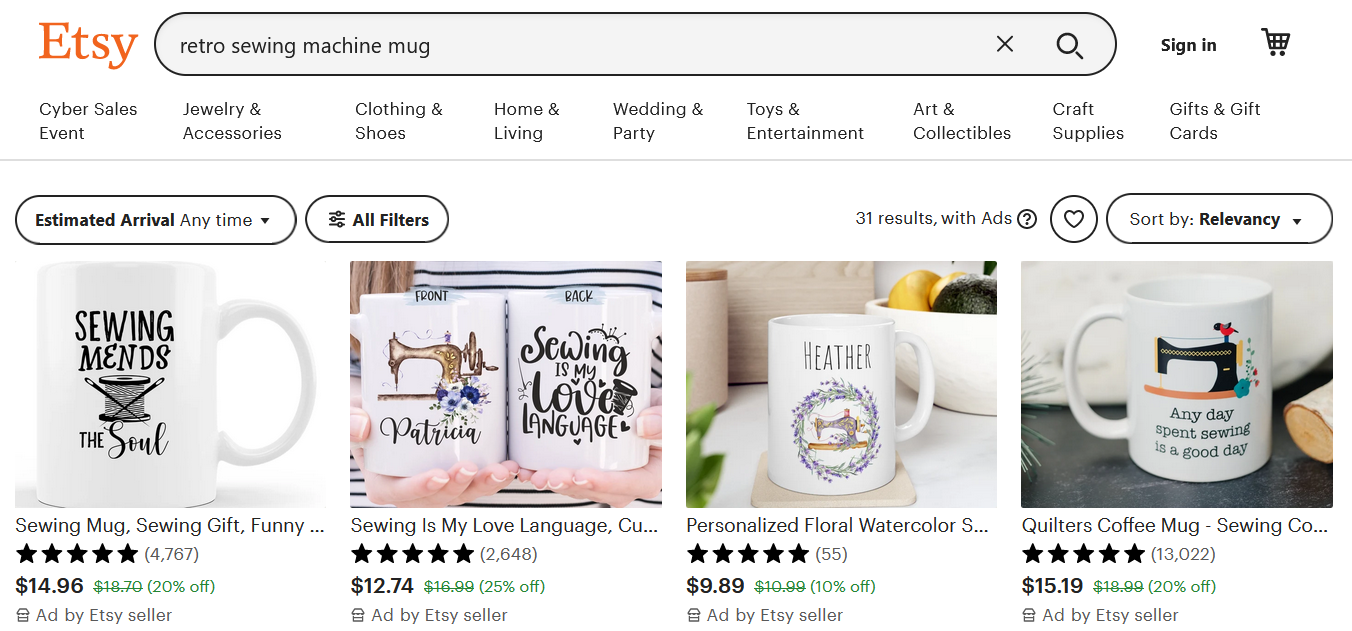If you're ready to sell your products online and you need a place that will allow you to sell quickly and easily, marketplaces can be a great option for your business.
Affiliate Disclaimer: This page may contain affiliate links. If you use these links, I will receive a small commission. However, using these links will have no effect on you or your purchase in any way. For more information refer to our disclaimer.
However, when starting a business online, it's important to understand the pros and cons of selling in online marketplaces and create a strategy that leads to success.
What is an Online Marketplace?
An online marketplace is an e-commerce site that brings sellers and buyers together in one place. Companies use online marketplaces to reach customers who want to purchase their products and services. Some examples of online marketplaces include Amazon, Etsy, Michaels, eBay and Craigslist.
Let's start out by saying that we love online marketplaces as a way to take an offline business online. And our goal is to help you build a thriving online business, that helps you start earning as quickly as possible. That goal includes showing you how to use marketplaces like Etsy (a popular marketplace for crafters and makers) and others to get the ball rolling.
After all, having your business online gives you the benefit of reaching a larger audience and positioning your brand in the marketplace as the "go to" resource for what you're selling. These benefits alone makes it better than not being online at all.
That being said, when you select a marketplace, it's important to understand how your chosen platform can help as well as hurt your business. That way, you can create a plan that gets you past the limitations we'll discuss below.
The Positive: A Source of Traffic for Specific Niches
One of the primary benefits of using marketplaces is that they are great traffic sources for specific niches. For example the top niches on Etsy include jewelry, wedding items, accessories, paper and party supplies, clothing, vintage items, home and living, art and collectibles.
If you're in one of the niches above and you can navigate past the competition, possibly niching down further, you might stand a chance of reaching your financial goals using the Etsy platform.
No matter what platform you use, it's important to do your research to determine the audience and niches that work best on the particular platform of choice.
How Etsy's Growth Can Help Your Business
Etsy has increased revenue and usage every year since its IPO in 2010, but the coronavirus pandemic supercharged its growth, from $818 million revenue in 2019 to $1.72 billion in 2020. Etsy also doubled active buyers in that time period.
This means more potential eyes on your products and that can translate to more opportunities to sell your products.
Etsy and other marketplace platforms are a great entry into the world of online marketing. By using these platforms you'll learn about SEO, keyword optimization and traffic, something that will help you build assets that you can use as you start to venture out to other platforms.
You'll have a great income source on marketplace platforms if you're able to learn their search algorithm (which may be totally different from Google's algorithm) and you can overcome the rules and limitations discussed below.
You'll also need to sift through the competition to find customers who are a great fit for your products. If you are able to niche down and differentiate yourself within the confines of marketplace rules and limitations outlined below, you can be successful.

The Cons: Marketplace Fees
Marketplaces can charge a lot of fees in addition to the unavoidable credit card transaction fees. In many cases they charge platform fees. And it boils down to, the more money you make, the more they take.
For example, if you're on Etsy, they charge upfront fees as well as fees when you sell an item. Here are some of the fees that Etsy charges:
This is not an all inclusive list of the fees and associated costs of selling on the Etsy platform. It doesn't include taxes, labor costs, material costs and overhead.
This is just an example of the kinds of fees you can incur on Etsy, one of the more popular marketplace platforms. Of course, there are many other platforms available and you want to be sure to review and understand the fees associated with any platform you decide to use.
The Cons: Marketplace Rules and Limitations
Many marketplaces also have rules that limit your control and freedom in the following ways:
- They may require that you only sell on their platform. So that means that if you decide to sell on your own platform or another platform, you would have to close your account and start over.
- They often control how much you can charge for your products. This puts a limit on the profit you can receive from your creations.
- You have no control over the shopping experience. If you want to add additional cart functionality like upsells or order bumps, you wouldn't be able to. You also limited to the payment methods offered by the platform, which may or may not be in line with the payment companies your audience is familiar with.
- You don’t have a direct line of communication with your customers. You may be able to communicate, but only about certain topics like order status. If you communicate outside the bounds of a particular order, your account can runs the risk of being shut down. This is by far the worst limitation on your business, because without a way to communicate with your customers, you have no way of distinguishing your brand from all the other sellers on the platform.
- You receive limited sales data. Without the ability to extract specific data sets and reports, you are not able to make informed decisions about the direction you want to take with your business.
- Any customers you sell to on marketplace platforms aren’t your customers. They are the marketplace’s customers. This can also result in big limitations for your business. This is due to the fact that you will not be able to grow your brand using these platforms, unless they allow you to nurture your audience and create repeat business for your brand.
Otherwise all the promotions and marketing you do for your product helps the marketplace grow and not your individual, unique brand. In this scenario, you'll never distinguish yourself from all the noise and competition by taking people off the platform and sending them to your business where they can learn more and become a lead.
The Positives: Building a Platform You Own and Control... with WordPress
One of the best ways to sell your digital products (or any product for that matter) is to sell them on your own platform. You'll want to create a platform that you own and control, like a self hosted WordPress site.
Having your own site puts you in the driver's seat and gives you the control you need to grow a thriving business. Using a site of your own enables you to build brand authority, sell products with eCommerce cart functionality, add payment processors that your customers are comfortable with, and create an unlimited line of communication between your brand and your audience that helps you grow, earning more over time.
Data gathering is also a snap with tools like Google Analytics, Google Site Kit and other analytics tools that integrate with WordPress to provide the information you need to grow.
Of course the biggest drawback to having your own platform is that you may hear crickets for a while until you're able to build an audience of loyal followers.
You won't have the flood of incoming traffic that you might get on a well known platform. And at the same time, you won't have all the noise and competition from other sellers appearing right next to your products.
Your visitors can stay focused on the experience you set for them when shopping on your site. They will only have your products and services to choose from.
After you build your site, building traffic and creating an audience of engaged, ready to buy consumers will be your next challenge.
Key Takeaways...
The biggest takeaway from this post is that marketplaces are a great source of revenue, but they should only be part of your income generating strategy. They should not be used as your only source of revenue.
The ultimate goal is to have a platform that you own and control. You'll eventually need a place that serves as a central hub that you control, that will allow you to control your customer journey, allowing for a two way dialog that results in sales, testimonials, and repeat business for you, not Etsy or any other platform.
It's also important to read the fine print to determine what you can and cannot do on each platform.
Now that you have a list of pros and cons, you can make an informed decision about the platforms that will work best for your business. And you won't be blindsided when it comes to realizing success with the platforms you select.

